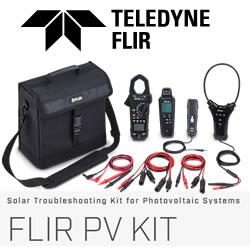New LG Solar Modules Launching In U.S. Deliver Higher Efficiency, Performance
New LG Panels Work Harder, Look Better for Homeowners, Installers
LG Business Solutions is launching a new generation of solar modules in the United States - the latest LG NeON® 2 panels featuring even higher efficiency and greater performance characteristics than current models.
Available for order now and shipping to the U.S. market beginning next month, the new series of LG NeON 2 60-cell modules feature a power class of up to 365 watts with a 21.1 percent module efficiency.* With a better temperature coefficient, they also deliver a higher energy yield optimized for improved year-round performance.
LG Solar USA Senior Director David Chang said this new module design "demonstrates how, through ongoing R&D investment, LG continues to be on the cutting-edge of high-efficiency, low-degradation, industry-leading modules."
LG achieved the efficiency improvement by using larger wafers, which reduce the white space between cells while keeping the traditional industry format of 60 cells for residential applications.
"Installers will appreciate the new module's installation flexibility and higher output in less roof space, while homeowners will know they are investing in cutting-edge renewable energy technology from a brand they know and trust," said Chang.
As with all LG solar panels, the new generation of modules feature LG's "Triple 25-year warranty." Backed by 50-billion-dollar LG Electronics, the limited warranty covers product, performance and labor for a quarter century.**
The new NeON 2 modules will be shipping to U.S. customers in August initially from LG's world-class production facility in South Korea, and soon thereafter also from LG's Huntsville, Ala., factory, which opened in 2019. Through investment and workforce development, LG has increased U.S. production capacity from 500 to 550 MW this year.
Beyond the improved module power classes and efficiencies, LG's new panels feature a uniform frame size, now consistent across both NeON 2 and NeON R product classes for greater operational efficiency.
A Harris poll conducted during the pandemic points to increased U.S. interest for residential solar products. "This is one in a series of LG solar innovations we're bringing to market this year to address these needs," Chang added.
To learn more about LG's award-winning solar products, please visit LG.com/solar.
*Compared with 350W output and 20.7 percent efficiency for conventional NeON models.
**Performance of greater than 90 percent nameplate rating at the end of 25 years.
NEW NeON 2 SPECIFICATIONS:
Monocrystalline N-type cell
66.93 x 40.00 x 1.57 inches (1,700 x 1,016 x 40 mm)
39.68 pounds (18kg)
High-transmittance AR coated glass
IP 68 class J/Box with MC4 connector
Maximum 365W (21.1% Module Efficiency)
-0.34%/℃ Temperature Coefficient
25-year Limited Product Warranty
25-year 90.08% Limited Performance Warranty
25-year Limited Labor Warranty
About LG Business Solutions
LG Electronics is a leading provider of high-efficiency solar modules to the U.S. commercial and residential markets. LG's U.S. solar business is part of the LG Electronics USA Business Solutions division based in Lincolnshire, Ill. LG's U.S. solar module production is located in Huntsville, Ala. LG Electronics USA Inc., headquartered in Englewood Cliffs, N.J., is the North American subsidiary of LG Electronics Inc., a $53 billion global innovator in technology and manufacturing. www.LG.com/solar.
Featured Product

FLIR PV KIT - Solar Troubleshooting Kit for Photovoltaic Systems
FLIR PV kits are designed to assess the performance, safety, and efficiency of residential, commercial, and industrial solar panels and photovoltaic systems. PV kits from FLIR help you diagnose faults and potential failures and ensure optimal energy production, system longevity, and compliance with industry standards. With a PV kit from FLIR, you'll be perfectly equipped for any solar installation or repair.
